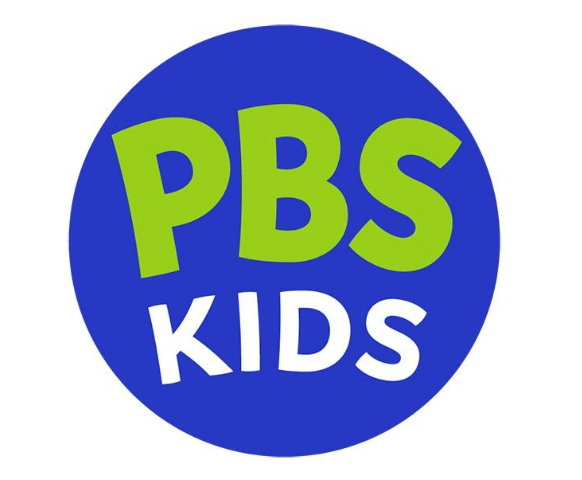I typically start the New Year with ideas to improve myself. This year I’m applying that critical lens to my life as an Internet marketer.
Embrace the negative review
I’m won’t be so darn sensitive and controlling when people say bad things about me. After all, negative feedback is better than none; it means someone wants to help. The Web is a great place to practice this concept, because hundreds of consumers will willingly tell you what’s wrong with your product, what’s off-base in your communication, and how to improve.
Take Gamespot critic Jeff Gertsmann, who was fired because of his negative review of Kane & Lynch, an advertiser. The gaming community got wind, ranted about Gamespot’s lack of integrity, made it a top story on Digg and viewed the video review 300,000 times on YouTube. This year I will not silence my critics, but rather listen to their constructive feedback, and admit my mistakes graciously.
Don’t rest on my search laurels
It’s easy to be lazy and keep doing what has worked before. There’s no doubt that search works, especially for big brands with the money to get their message center stage on Google. That’s great for reaching consumers who know exactly what they want but not everyone takes the direct route.
Web 2.0 has changed the dynamics of online search. Peer recommendations direct consumers toward second tier, smaller brands that people love enough to tag, or recommend on review sites like CNET, Epinions, and BizRate. Googling “cool gifts,” produces suggestions that are not as personal as those that trusted peers have tagged on Stylehive or blogged on Gizmodo.
Social SEO is a new approach to picking key words based on language consumers use when they talk about your brand in social networks, blogs, forums, and social media outlets. This year, I will go beyond paid and natural search efforts and tune into the intimate conversation between consumers.
Collaborate with consumers beyond user generated ads
Sometimes relationships get stale and you have to infuse some new life. Not long ago it was fresh to ask consumers to conceive ads; the Converse Gallery, Mastercard’s Write a Priceless Ad contest, and Current TV leveraged consumers’ brand passion and creativity, but that was then.
In 2008, I will take a hint from Facebook and Google (and Marx) and supply my audience with tools and features to build next generation web applications. I will expose the product development process to consumers who are invested in participating in my brand. I will not succumb to the comfortable lure of old-fashioned “campaigns” but will stretch to create interactive brand experiences that leave a tangible and indelible impression. Foremost, I will be inventive and open-minded when imagining the future of consumer collaboration.
Hire a social media director
I’m sick of hearing my customers say I don’t listen to them, so next year I’m going to pay someone to listen for me – a social media director. While listening tools are still rather primitive, consumers are accessible online voicing their needs and frustrations in real-time. After all, the Web is one huge user group and opinion lab. Okay, maybe its several user groups and decentralized opinion sources, but they are out there 24/7.
An influential, thoughtful few are all you need to impact your business. For instance, listening taught us that consumers are confused by technology and leery of products they have to learn how to use. HP made a mint off that insight with its Easy Share photo solutions, making it easy to download and print photos. And Apple brought us the iPod / iTunes combo so that, even though you can buy music elsewhere for less, you don’t because iTunes is so easy.
Always deliver utility
At Thanksgiving I was struck anew by a familiar refrain heard in the kitchen: “If you’re going to be in here, make yourself useful.” This is also wisdom for other aspects of my career as an Internet marketer.
The time has come to “make ourselves useful” by building marketing programs around what brands can do for consumers. Instead of talking at people, I’m going to work on enhancing their day, filling a need, or being in the right place at the right time. WeightWatchers.com’s Points Tracker keeps tabs on the value of food one consumes, even converting restaurant dishes into points to let users monitor their intake. Boost Up, a non-profit program that keeps students from dropping out of school, has a mobile application that sends uplifting “boost” notes to friends’ cell phones. Even online ads can be useful – the BearingPoint management consultancy ran banner ads that let you download white papers, saving users the extra step. Like the Thanksgiving guest who peels potatoes or scrubs pots, brands that make themselves useful will always be welcome.
Be sincere in your commitments
I like to look good in public. That’s why I hold the elevator doors open, donate to my alma mater, and collect cans at work. But if these efforts contradicted my character I’d appear insincere. When brands slap a cause on their online efforts, they appear inauthentic and erode goodwill. For 2008, I resolve to align my goodwill efforts with my brand character.
MySpace recently built a platform called Impact that lets charities set up their own pages, with videos, fund-raising tools and campaign resources. This works because enabling outreach and interaction through profile building is MySpace’s core competency.
Keep videos short, sweet, to the point
Much as I’d like to think I’m incredibly interesting, I suspect this is just my inflated sense of self-importance talking. The same could be said of most marketing-driven Internet videos. Eight hours of new videos are uploaded every minute to YouTube, so it behooves me to craft “short stories, well-told” for the Web. Users want videos that complement their interests, so I will consider behavioral and contextual targeting to reach my audience, plus the capability to click through to my site.
Execute quickly, then fix quickly
It makes me feel secure to research everything within an inch of its life, but next year I’m going to worry less about making mistakes. The nature of the Internet is fast turnaround, fast learning, fast fixes. Rather than belabor an idea for months, I will throw it out there, get real-time feedback and change it if it fails.
Look at the criticism Beacon handed Facebook, a misconceived system that published details of members’ activities on other sites. An angry user group, “Facebook: Stop Invading My Privacy,” took root and within a week, Facebook changed Beacon’s opt-out policy. When a company is willing to make iterative changes, the first draft no longer need be perfect; the greater risk is missing the boat on a timely idea.
Find an unmet need before making widgets and apps
I like to start the New Year by clearing my closets, and this year I’m applying that practice to my widgets and applications. The world of widgets is exploding, but the last thing we need is another pointless app. A good widget empowers people on their own terms and complements their life. The most popular widgets on Facebook, Super Wall and Fun Wall, let users decorate their walls; Top Friends lets you show love to friends in your profile; Are YOU Interested lets you find out who has a crush on you.
All these apps appeal to basic human needs for self-expression, love and belonging and they fit the Facebook promise. On the other hand, Red Bull’s RoShamBull app lost momentum, despite a big launch, because the game of Rock Paper Scissor doesn’t scratch a universal itch. When I think about making a widget next year, I will first locate a real human want/need/desire that calls out for fulfillment.
Be smart in using Flash
I’m always polishing my communication skills because the right approach is all-important in succeeding in life. When fending off a mugger, anger may work, but comforting a child with a skinned knee calls for gentleness. Online and off, you need to use the right tool for the task.
Flash is absolutely everywhere, and that’s great. It can create visually stunning, highly interactive, content-rich experiences. However, Flash doesn’t perform as well in Google searches, and it can annoy users who must deal with slow load times such as Nikon’s microsite for the D300 that doesn’t provide the option to skip their zany, stroke-inducing intro. If I’m dizzy and blinded, I’m a lot less likely to purchase a thousand dollar camera. Advanced Javascript techniques, AJAX, and other contemporary technologies can supplement your Flash experience, creating content that works on the traditional web and on portable technologies like handheld computers and cellphones.
Shana Lory is the director of strategic planning at Renegade, a New York-based interactive brand experience agency. Lydia Snape is Renegade’s director of digital development.



